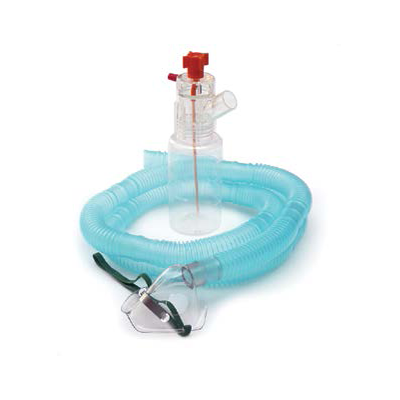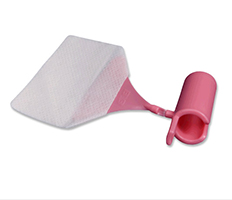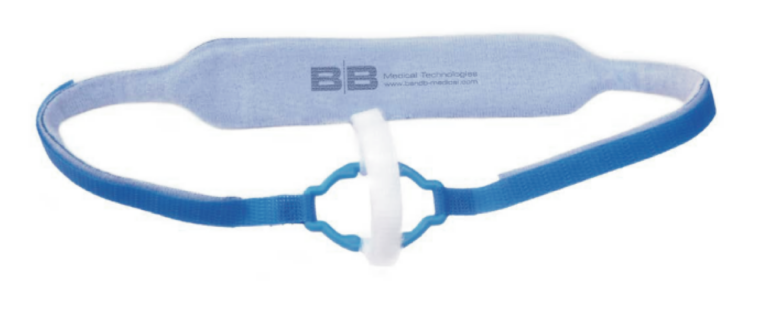Every decision counts when trying to enhance patient treatment and care, particularly when it comes to the instruments we use to provide care. The devices you select significantly impact how fast and efficiently our patients find relief from respiratory disorders like asthma, COPD, or even cystic fibrosis, which require precise therapy.
However, when choosing respiratory care devices, the biggest confusion lies in choosing between the nebulizer or aerosol nebulizer – what is the most appropriate for each patient comfort in critical care?
Understanding the differences between nebulizers and aerosol nebulizers is crucial for making wise choices when administering respiratory drugs. Although their definitions, types, and applications differ, yet both devices are important in the management of respiratory disorders.
Discover the differences between nebulizers and aerosol nebulizers, when to use each, and how they may affect the respiratory treatment that your patients receive.
Comparing Nebulizer vs Aerosol Nebulizer – What’s Best for Critical Care?
Definition: Nebulizer vs. Aerosol Nebulizer
What is a Nebulizer?
The Nebulizer machine creates a tiny mist for inhalation from liquid medication. It is frequently used to treat respiratory disorders such as; asthma, chronic obstructive pulmonary disease, and cystic fibrosis. Because of their versatility, nebulizers can be powered by batteries or electricity.
Patients of various ages, including children, can use them because they administer medication via a mouthpiece or nebulizer mask.
What is an Aerosol Nebulizer?
An aerosol nebulizer is a device that uses cutting-edge technology, including vibrating mesh systems or ultrasonic waves, to create aerosolized drug particles. To ensure effective medication administration deep into the lungs, these devices are made to produce smaller, more homogeneous particles.
When compared to conventional nebulizers, aerosol nebulizers are frequently linked to greater efficiency and quicker treatment periods.
Types of Nebulizers
#1. Jet Nebulizers
Mechanism – Turn liquid medicine into an aerosol by using compressed air.
Benefits – Widely accessible, reasonably priced, and efficient for various drugs.
Limitations – Slower than other varieties, loud, and bulky.
#2. Ultrasonic High-frequency nebulizers
Mechanism – High-frequency sound vibrations are used to produce aerosolized particles.
Benefits – Include faster treatment times and quieter operation, making it ideal for use with kids.
Cons – Expensive compared to jet nebulizers; not appropriate for heat-sensitive medications.
#3. Nebulizers with mesh
Mechanism – Use a vibrating plate or mesh to create tiny aerosol particles.
Benefits – Include superior efficiency, mobility, and less pharmaceutical waste.
Cons – Costlier and more maintenance-intensive.
Types of Aerosol Nebulizers
- Ultrasonic Aerosol Nebulizers
Although designed to produce smaller particle sizes, ultrasonic aerosol nebulizers function similarly to ultrasonic nebulizers. These devices work especially well in critical care situations, where accurate drug delivery is essential.
- Vibrating Mesh Aerosol Nebulizers
These sophisticated gadgets produce homogeneous aerosol particles by vibrating a mesh with microscopic pores. They are renowned for effectively administering drugs with little to no leftover waste.
Nebulizer Uses vs. Aerosol Nebulizer Uses
Nebulizer Uses
- Conventional nebulizers are helpful and frequently used for:
- Treating long-term respiratory conditions like COPD and asthma.
- Supplying mucolytic, corticosteroids, and bronchodilators.
- Taking care of young patients who could have trouble using inhalers (nebulizers for kids).
Aerosol Nebulizer Uses
Aerosol nebulizers offer enhanced capabilities, making them suitable for:
- Applications in critical care are needed for quick and effective medication delivery.
- Giving patients who are experiencing acute respiratory distress large dosages of medicines.
- Because the particles are smaller, the drug is sure to enter the lungs deeply.
Comparative Analysis: Key Differences
| Feature | Traditional Nebulizer | Aerosol Nebulizer |
| Particle Size | Larger particles; less efficient lung delivery | Smaller, uniform particles; deeper lung penetration |
| Treatment Time | Longer (5–15 minutes) | Shorter (often under 5 minutes) |
| Portability | Bulky; less portable | Compact; easy to carry |
| Noise Level | Noisy operation | Quieter operation |
| Cost | Affordable | Higher cost |
| Drug Waste | Higher residual medication | Minimal residual waste |
| Compatibility with Medications | Suitable for most medications | Limited compatibility with heat-sensitive drugs |
Technology & Mechanism
Traditional Nebulizers: Use compressed air or ultrasonic waves to aerosolize medication. While effective, this process can take longer and may not be ideal for emergency situations.
Aerosol Nebulizers: Utilize air pressure to deliver medication quickly, making them better suited for critical care or situations requiring immediate relief.
Portability
Conventional nebulizers are usually bigger and require a power source, so they can only be used in stationary locations like homes or hospitals.
Thanks to aerosol nebulizers, which are portable and run on batteries, patients can continue their therapy wherever they are.
Treatment Time
Conventional Nebulizers – Nebulizer treatment may benefit ailments requiring ongoing care.
Aerosol Nebulizers – Perfect for acute treatment, these devices deliver medication more rapidly and frequently in less than five minutes.
Cost & Maintenance
Conventional Nebulizers – Although they work well, they might be more costly upfront and need regular maintenance to stay functioning over time.
Aerosol Nebulizers – Because of their simplified design, these devices are less expensive and simpler to maintain.
Nebulizer vs. Aerosol Nebulizer in Critical Care
The decision between an aerosol nebulizer and a conventional nebulizer in critical care settings can have a big influence on treatment results:
Effectiveness of Drug Administration – Aerosol nebulizers are perfect for patients on mechanical ventilation or experiencing acute respiratory distress because they can more effectively provide larger medication dosages.
Treatment Speed – Aerosol nebulizers’ quicker treatment times ease the strain on medical personnel while enhancing patient compliance
Patient Comfort – Aerosol nebulizers operate more quietly, which improves patient comfort while receiving therapy.
Nebulizer vs. Atomizer: Clearing Up Confusion
Another question folks often ask is, “What’s the difference between a nebulizer and an atomizer?” Both turn liquid into a fine mist, and atomizers often create smaller particles and are more appropriate for administering drugs for ailments like allergies or nose congestion.
Nebulizers, on the other hand, are used to administer medicine deeply into the lungs to treat both acute and chronic respiratory disorders.
Nebulizer vs. Inhaler: Which Is Right for Your Patient?
The applications of nebulizers and inhalers are very different. Nebulizers are superior for individuals who require a longer, continuous course of treatment, even though inhalers are portable and provide a predetermined medication dosage in a single puff. Nebulizers are frequently a more dependable option for young patients, the elderly, or those with severe symptoms.
Choosing the Right Device for Your Patients
The patient’s condition, age, and environment all influence the ideal device.
Chronic Illnesses
Traditional nebulizers offer consistent therapy for chronic conditions like cystic fibrosis or COPD, which can change the lives of many patients.
Acute Illnesses
Aerosol nebulizers provide quick, efficient relief for emergencies like asthma attacks, allowing patients to breathe more easily when every second matters.
Pediatric Patients
Children frequently react better to nebulizer treatments with compact, handheld equipment, such as an aerosol nebulizer. The small shape and shorter treatment durations can increase compliance and lessen anxiety.
Home vs. Hospital
Hospitals – Because of their sturdy construction and capacity for prolonged usage, traditional nebulizers are frequently the preferred choice for critical care.
Homecare—Aerosol nebulizers are excellent in-home care tools because they are portable and simple to use. This allows patients to manage their ailments on their own.
You Chose the Right One? Now Buy the Best One From B&B Medical Technologies!
The suggested instruments are important since we’ve been supplying them to medical professionals for years. Selecting the best gadget involves more than just technology; it also involves ensuring patients are comfortable, improving results, and assisting them with improved health.
We at B&B Medical Technologies are aware of the difficulties you face when delivering superior care. Because of this, we provide a wide variety of conventional and aerosol nebulizers made with your patients in mind. Our products address the wide range of demands of the current respiratory care environment, from effective, portable solutions to sturdy devices for critical care.
Let’s make each breath matter. Explore our selection of respiratory solutions today to discover the difference we can make together.


